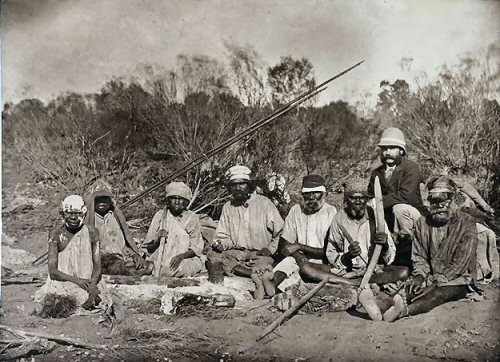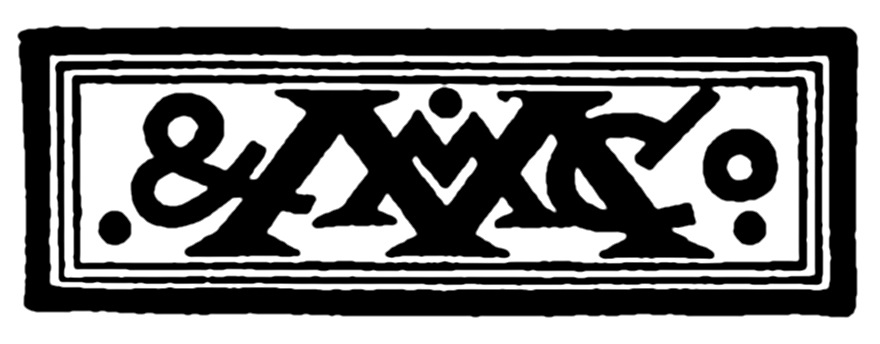|
Naualko
The Naualko (Nhaawuparlku) were an indigenous Australian people of New South Wales. Name The name Naualko derives from their word for 'yes'(''naua/nawa'' (so written by Norman Tindale). The word is now reconstructed as ''nhaawu'', and thus their endonym means 'the people who utter ''nhaawu'' when they say 'yes.' Language The Naualko language, which was spoken in the Wilcannia area, became extinct very early on as colonization began. Luise Hercus and others now consider that it is probably related more to Kurnu than to Paakantyi. It has recently been argued, though no certainty attaches to the hypothesis, that the language of the Milpulo was a dialect of Naualko. Country The Naulko moved over their tribal terrain's , in the far western sector of New South Wales, from Dunlop to Murtee on the upper Darling River. They were also around the lower Paroo River north to Lake Tongo. People It has been suggested that the Naualko might be classified as a northern branch of the Paakan ... [...More Info...] [...Related Items...] OR: [Wikipedia] [Google] [Baidu] |
Naualko Language
The Paakantyi language, also spelt Paakantji, Barkindji, Barkandji, and Baagandji, and is also known as the Darling language, is a nearly extinct Australian Aboriginal language spoken along the Darling River in New South Wales from the present-day Queensland border to Bourke, then along the river to Wentworth. It includes much of the backcountry around the Paroo River, plus an area along Coopers Creek into Queensland and also through the Broken Hill district. The name of the people and the language refers to the ''Paaka'' (Darling River, known today as the Darling-Barka). The suffix ''-ntyi'' means "belonging to".Luise Hercus. ''Baagandji Grammar'', ANU 1960; ''Paakantyi Dictionary'' (published with the assistance of AIATSIS, 1993) Speakers of the language are known as the Paakantyi (or variant spellings). The variant is slightly different along the river proper and ceases at the confluence of the Darling-Barka and the Murray rivers. The major work on the Paakantyi langu ... [...More Info...] [...Related Items...] OR: [Wikipedia] [Google] [Baidu] |
Paakantyi
The Paakantyi, or Barkindji or Barkandji, are an Australian Aboriginal tribal group of the Darling River (known to them as the Baaka) basin in Far West New South Wales, Australia. Name The ethnonym Paakantyi means "River people", formed from ''paaka'' river and the suffix ''-ntyi'', meaning "belonging to", thus "belonging to the river". They refer to themselves as ''wiimpatya''. The name ''Paakantyi'' therefore simply means the River People. Language Traditionally they speak the Paakantyi language of the Pama–Nyungan family, and one of the three major Aboriginal languages for the people of present-day Broken Hill region. The major work on the Paakantyi language has been that of the late linguist Luise Hercus. Country The Paakantyi dwelt along the Darling River, from Wilcannia downstream almost to Avoca. Inland from either side of the Darling, their territory extended to a distance of roughly 20–30 miles. According to Norman Tindale, they inhabited an area of some ... [...More Info...] [...Related Items...] OR: [Wikipedia] [Google] [Baidu] |
Indigenous Australian
Indigenous Australians are people with familial heritage from, or recognised membership of, the various ethnic groups living within the territory of contemporary Australia prior to History of Australia (1788–1850), British colonisation. They consist of two distinct groups, which include many ethnic groups: the Aboriginal Australians of the mainland and many islands, including Aboriginal Tasmanians, Tasmania, and the Torres Strait Islanders of the seas between Queensland and Papua New Guinea, located in Melanesia. 812,728 people Aboriginality, self-identified as being of Aboriginal and/or Torres Strait Islander origin in the 2021 Australian Census, representing 3.2% of the total population of Australia. Of these Indigenous Australians, 91.4% identified as Aboriginal, 4.2% identified as Torres Strait Islander, and 4.4% identified with both groups. The term Aboriginal and Torres Strait Islander peoples or the person's specific cultural group, is often preferred, though the term ... [...More Info...] [...Related Items...] OR: [Wikipedia] [Google] [Baidu] |
Royal Geographical Society Of Australasia
The Royal Geographical Society of Australasia, formerly the Geographical Society of Australasia, was an Australian organisation formed in 1883 until it split up into various state organisations in the 1920s. The South Australian and Queensland branches continue as the Royal Geographical Society of South Australia (RGSSA) and Royal Geographical Society of Queensland (RGSAQ) respectively. History On 22 June 1883, the Geographical Society of Australasia started at a meeting in Sydney, New South Wales, Australia. A branch was formed in Victoria in the same year. In July 1885, both the Queensland and the South Australian branches started. In July 1886 the society became the Royal Geographical Society of Australasia. The New South Wales branch's new constitution in 1886 widened its scope to encourage interest in scientific, commercial, educational and historical aspects of geography. The Society sponsored several important expeditions, notably the New Guinea Exploration Expeditio ... [...More Info...] [...Related Items...] OR: [Wikipedia] [Google] [Baidu] |
Macmillan Publishers
Macmillan Publishers (occasionally known as the Macmillan Group; formally Macmillan Publishers Ltd in the United Kingdom and Macmillan Publishing Group, LLC in the United States) is a British publishing company traditionally considered to be one of the Big Five (publishers), "Big Five" English language publishers (along with Penguin Random House, Hachette Book Group USA, Hachette, HarperCollins and Simon & Schuster). Founded in London in 1843 by Scottish brothers Daniel MacMillan, Daniel and Alexander MacMillan (publisher), Alexander MacMillan, the firm soon established itself as a leading publisher in Britain. It published two of the best-known works of Victorian-era children's literature, Lewis Carroll's ''Alice's Adventures in Wonderland'' (1865) and Rudyard Kipling's ''The Jungle Book'' (1894). Former Prime Minister of the United Kingdom, Harold Macmillan, grandson of co-founder Daniel, was chairman of the company from 1964 until his death in December 1986. Since 1999, Macmi ... [...More Info...] [...Related Items...] OR: [Wikipedia] [Google] [Baidu] |
John Benjamins Publishing
John Benjamins Publishing Company is an independent academic publisher in social sciences and humanities with its head office in Amsterdam, Netherlands. The company was founded in the 1960s by John and Claire Benjamins and is currently managed by their daughter Seline Benjamins. John Benjamins is especially noted for its publications in language, linguistics, translation studies, political linguistics and literary studies. It publishes books, as well as 80+ academic journals An academic journal (or scholarly journal or scientific journal) is a periodical publication in which scholarship relating to a particular academic discipline is published. They serve as permanent and transparent forums for the dissemination, scr ..., including among others: ''Diachronica'', '' International Journal of Corpus Linguistics'', '' Language Problems and Language Planning'', '' Studies in Language'', '' Lingvisticae Investigationes'', Target, '' Translation, Cognition & Behavior'', ''Journal ... [...More Info...] [...Related Items...] OR: [Wikipedia] [Google] [Baidu] |
University Of Sydney
The University of Sydney (USYD) is a public university, public research university in Sydney, Australia. Founded in 1850, it is the oldest university in both Australia and Oceania. One of Australia's six sandstone universities, it was one of the world's first universities to admit students solely on academic merit, and opened its doors to women on the same basis as men. The university comprises eight academic faculties and university schools, through which it offers bachelor, master and doctoral degrees. Five Nobel Prize, Nobel and two Crafoord Prize, Crafoord laureates have been affiliated with the university as graduates and faculty. The university has educated 8 Prime minister of Australia, Australian prime ministers, including incumbent Anthony Albanese; 2 Governor-General of Australia, governors-general of Australia; 13 Premier of New South Wales, premiers of New South Wales; and 26 justices of the High Court of Australia, including 5 Chief Justice of Australia, chief justic ... [...More Info...] [...Related Items...] OR: [Wikipedia] [Google] [Baidu] |
Frederic Bonney
Frederic Bonney (1842–1921) was a British landowner and photographer. He took photographs at Momba Station in New South Wales in the 1870s and he was known for these and his anthropology. He was born and died in Rugeley, Staffordshire. Life Bonney was the son of the Reverend Thomas Bonney, headmaster of Rugeley Grammar School. His brothers included Edward Smith Bonney and Thomas George Bonney, who was an academic geologist. He went to school at Marlborough College. His uncle, Charles Bonney, visited England from Australia in 1858 to 1862. Encouraged by his uncle, he and his brother, Edward, travelled to Australia. Edward went to Australia first and Frederic joined him in 1865 at Momba Station in New South Wales, near Wilcannia. In the late 1860s Momba had an area of . Charles Dickens' son, Plorn, was sent by his father to Momba Station and he arrived a few days before his sixteenth birthday in 1868. He worked as a stockman at Momba until 1872. Bonney's occupation wa ... [...More Info...] [...Related Items...] OR: [Wikipedia] [Google] [Baidu] |
Ethnonym
An ethnonym () is a name applied to a given ethnic group. Ethnonyms can be divided into two categories: exonyms (whose name of the ethnic group has been created by another group of people) and autonyms, or endonyms (whose name is created and used by the ethnic group itself). For example, the dominant ethnic group of Germany is the Germans. The ethnonym ''Germans'' is a Latin-derived exonym used in the English language, but the Germans call themselves , an endonym. The German people are identified by a variety of exonyms across Europe, such as (French language, French), (Italian language, Italian), (Swedish language, Swedish) and (Polish language, Polish). As a sub-field of anthroponymy, the study of ethnonyms is called ethnonymy or ethnonymics. Ethnonyms should not be confused with demonyms, which designate all the people of a geographic territory, regardless of ethnic or linguistic divisions within its population. Variations Numerous ethnonyms can apply to the same ethni ... [...More Info...] [...Related Items...] OR: [Wikipedia] [Google] [Baidu] |
Far West (New South Wales)
The Far West region of New South Wales, Australia refers generally to the western part of the state, which is too dry to support wheat or other crops or intensive grazing, pastoral endeavours. It is west of the North West Slopes, New South Wales, North West Slopes, Central West, New South Wales, Central West and the Riverina. It is an area with limited rainfall. The only major rivers found in it are the Darling River and the Murray River (on its southern edge), which originate in the Great Dividing Range to the east. The region corresponds to the combination of the Australian Bureau of Meteorology's forecast areas of ''Upper Western'' and ''Lower Western''. It also corresponds to the Western Division (New South Wales), Western Division established under the New South Wales ''Western Lands Act 1901''. The only city in the Far West is Broken Hill, New South Wales, Broken Hill. Other significant towns are Bourke, New South Wales, Bourke, Brewarrina, New South Wales, Brewarrina, ... [...More Info...] [...Related Items...] OR: [Wikipedia] [Google] [Baidu] |




